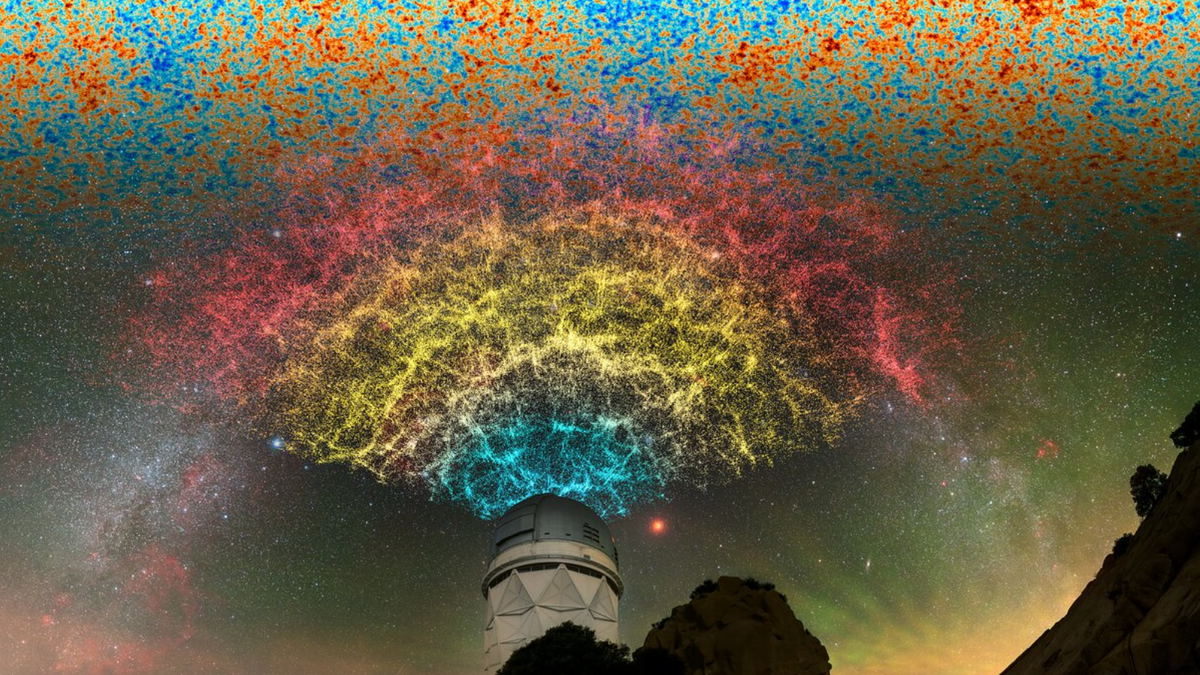The Evolution of the Universe: A Paradigm Shift in Cosmology?
The currently accepted standard model of the cosmos, known as the Lambda Cold Dark Matter (LCDM) model, may be facing a significant challenge to its supremacy. Recent observations in the cosmos have indicated that dark energy, the force responsible for the universe’s accelerating expansion, may be weakening. While this may seem insignificant at first glance, it could potentially lead to the first major paradigm shift in cosmology since the discovery of the accelerated expansion of the universe over a quarter-century ago. This revelation could have profound implications for the fate of our universe, suggesting a possible “Big Crunch” scenario rather than a “Big Rip” or a “Big Chill.”
The Quest for New Cosmic Insights
The discovery of dark energy’s evolution emerged from extensive observations carried out as part of one of the deepest mappings of the cosmos to date. The data was collected in the first year of operation of the Dark Energy Spectroscopic Instrument (DESI), utilizing 5000 robotic eyes to capture light from millions of galaxies across a significant portion of the observable sky. By analyzing the spectral colors of this light, scientists were able to track the universe’s expansion over billions of years through a phenomenon known as “redshift.”
- Insight: This groundbreaking data has sparked excitement among cosmologists, indicating a potential shift in our understanding of dark energy and its role in shaping the cosmos.
The Standard Model of Cosmology
The LCDM model posits that following the Big Bang, the universe was both dense and hot, but remarkably uniform in all directions. As the universe expanded, slight density fluctuations led to the formation of structures, with dark matter clustering and birthing the first galaxies. This model incorporates dark energy as a constant force represented by lambda, assumed to remain unchanged over time.
“DESI’s observations challenge the traditional LCDM model by suggesting a variability in dark energy over time, opening the door to new models that depart from the idea of a constant cosmological constant.”
The implications of this newfound revelation have sent shockwaves through the cosmological community, prompting a reassessment of fundamental assumptions regarding the nature of dark energy and its evolution.
A History of Cosmic Constants
The cosmological constant, first introduced by Einstein in the early 20th century, initially served to maintain a static universe in his equations of general relativity. However, subsequent observations by astronomers like Hubble revealed an expanding universe, prompting Einstein to abandon the cosmological constant as a theoretical artifact – a decision he later regretted.
Notably, the revival of the cosmological constant in modern cosmology as dark energy has raised new questions about its nature and behavior. The recent DESI observations hint at a departure from the established framework, challenging physicists to reevaluate their understanding of the universe’s fundamental forces.
Dark Energy’s Enigmatic Essence
Dark energy remains a mystery, comprising the bulk of the universe’s content yet eluding definitive explanation. As the driving force behind the universe’s accelerating expansion, dark energy’s potential evolution could hold the key to unraveling cosmic destinies.
“The evolving nature of dark energy presents a significant puzzle in cosmology, offering insights into the universe’s ultimate fate and the role of unseen forces in shaping its structure.”
As scientists strive to comprehend the shifting dynamics of dark energy, the prospect of a reimagined cosmic narrative emerges, with implications reaching far beyond astronomical observations.
Future Prospects: Pondering Cosmic Endgames
The implications of dark energy’s evolution extend into the distant future, painting vivid scenarios of cosmic destinies. Whether the universe faces a “Big Crunch” or succumbs to the relentless expansion fueled by dark energy remains an open question, poised for further exploration and discovery.
As cosmologists eagerly await the next phase of observations from DESI and other telescopic endeavors, the quest for a comprehensive understanding of the cosmos continues unabated. The convergence of data from disparate sources promises to unveil new truths about the universe’s structure and evolution, offering a deeper insight into the enigmatic forces that shape our cosmic reality.
Image/Photo credit: source url





